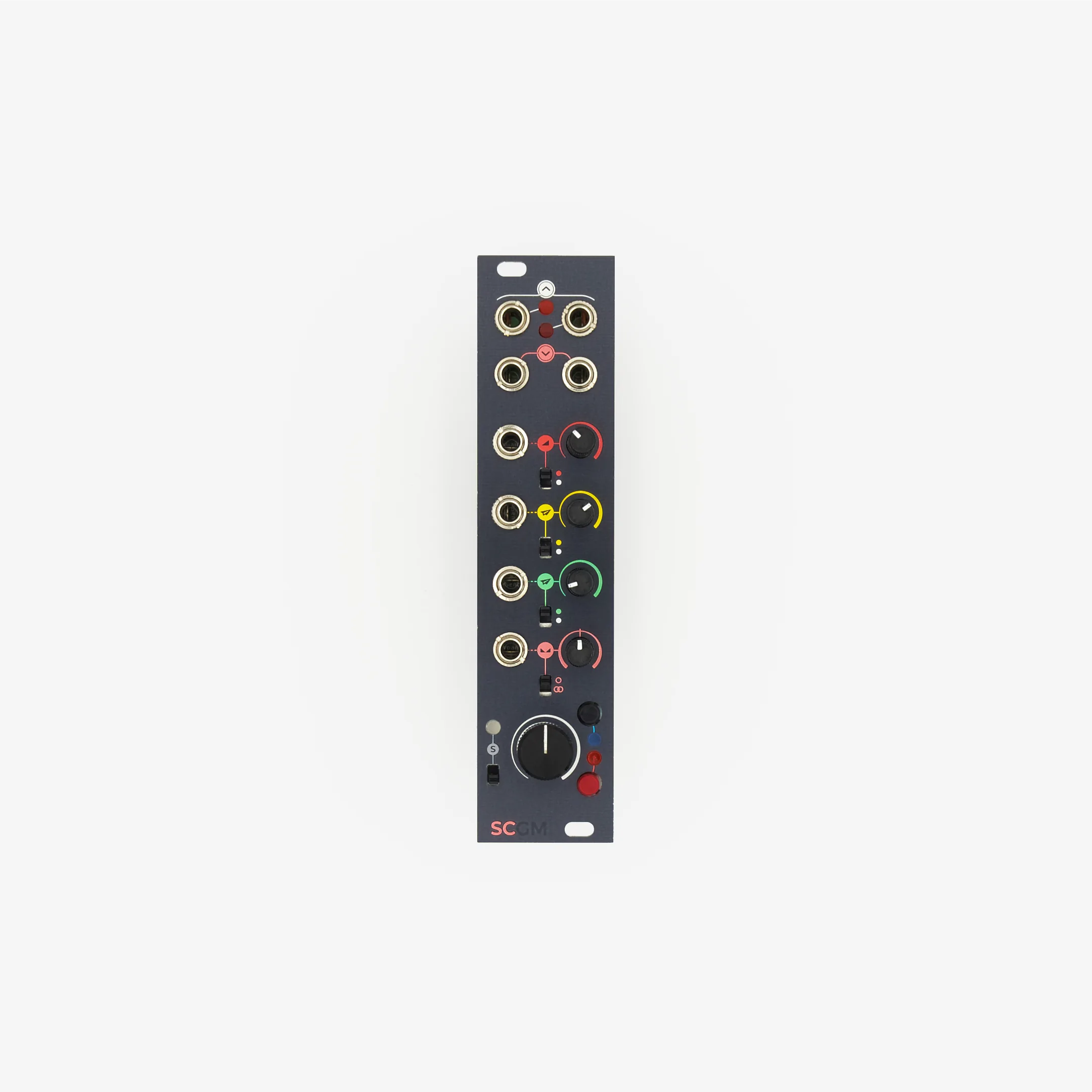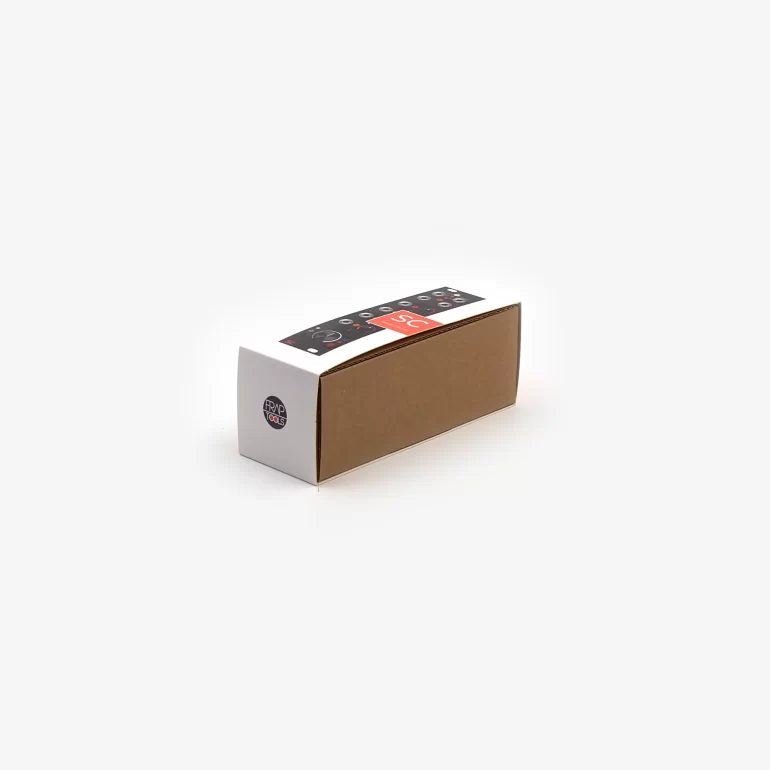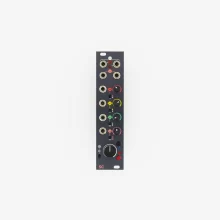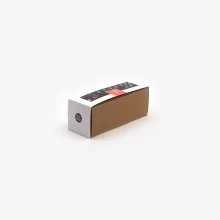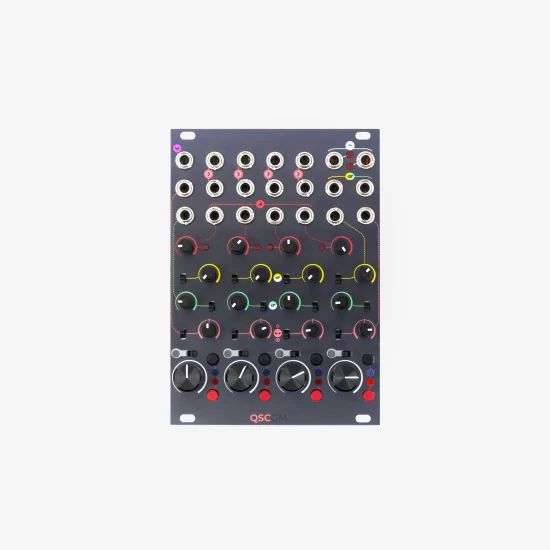SC Stereo Channel
175,00 € + VAT
In stock
Description
The Stereo Channel is a single-channel stereo module for the CGM Eurorack mixer, fully compatible with every other product of this family.
Thanks to its advanced I/O configuration, it can work as stereo-to-stereo, mono-to-mono, mono-to-stereo, and stereo-to-mono.
The gain control and the two mono FX sends can work in pre or post-fader mode, and the panpot can also work as a dual mono crossfader, making it suitable for blending two mono sources into a single mono sum.
All the parameters are voltage-controllable for creative mixing automation.
Electronic latching mute, PFL, and Solo-in-Place complete the feature set suitable both for studio and live performances.
Key Features
Thanks to a flexible I/O semi-normalization pattern, you can use the SC in other ways than stereo. You can patch a mono signal and record it in stereo straight after the VCA to track the voltage-controlled panning or blend two mono sources into one, and more.
The Channel module features two amplitude controls: an input VCA and a volume fader. The input VCA is voltage-controllable and, if the signal has enough amplitude, it can overdrive the circuit with a creamy, fat saturation. A peak LED tells when the signal is clipping, but don’t fear cranking it up!
An output allows you to take the channel output for parallel processing or multitrack recording. You can choose to work pre-fader (straight after the input VCA) or post-fader (with the main fader affecting the signal’s amplitude). The outputs are semi-normaled: use just the left output for a mono sum, and both channels for a stereo signal.
The mute button allows you to remove a channel from the group sum with a click. The mute function works over the input VCA, so it will also mute the effect sends.
The yellow and green knobs are two effect sends levels. They can work pre- or post-fader, and they can be voltage-controlled for expressive and creative results.
The Pan knob defines the stereo placement of the sound, which you can voltage-control as well. The Pan/Crossfade switch lets you use the SC as a dual mono mixer, blending two mono signals into a mono output. When in Crossfade mode, the pan pot controls the balance of the two inputs.
The mute button allows you to remove a channel from the group sum with a click. The mute function works over the input VCA, so it will also mute the effect sends.
The Solo-In-Place switch lets you prepare a “scene” of channels to be isolated from the other ones, and then recall it through the Safe Solo switch on the Group module. It can be seen as a mute group function that allows you to mute all the channels outside the solo scene with a click.
Push the PFL button and rotate the PFL fader on the master module to preview a channel: it’s convenient for tuning your oscillators or checking if everything is ok before bringing whatever sound source into the mix.
Channel Family Comparison
Channel circuits | 1 | 1 | 4 |
Mono/Stereo | Mono | Stereo/Dual mono | Stereo/Dual mono |
Pan | Pan | Pan/Crossfade | Pan/Crossfade |
CV over VCA | ✓ | ✓ | ✓ |
CV over pan | ✓ | ✓ | 2 (on ch. 1 and 4) |
CV over sends | 2 | ✓ | 2 (yellow on ch. 1, green on ch. 4) |
FX sends per channel | 2 | 2 | 2 |
FX sends circuit | Pre-/Post-fader | Pre-/Post-fader | Pre-/Post-fader |
Channel output | Mono Pre-/Post-fader | Mono/stereo Pre-/Post-fader | Stereo Post-fader local mix |
Mute | Mechanical latching | Electronic latching | Electronic latching |
Solo in place | Mechanical latching | Mechanical switch | Mechanical switch |
PFL | Mechanical latching | Electronic latching | Electronic latching |
Fader knob | ⌀ 20 mm | ⌀ 12 mm | ⌀ 12 mm |
Additional inputs | ╳ | ╳ | Mono aux in |
Additional outputs | ╳ | ╳ | 2 local mono FX sends |
Learn
Learn
Learn
Additional information
| Weight | 0,161 kg |
|---|---|
| Dimensions | 15,6 × 6 × 6 cm |
Specs
Size | 6 HP |
Depth | 38 mm |
Current draw | 70 mA @ +12 V 45 mA @ -12 V |
Recommended warmup time | 30 min |
Audio input impedance | > 10 KΩ (mono) > 20 KΩ (stereo) |
Audio output impedance | ≥100 Ω |
CV Input impedance | > 90 KΩ |
Maximum output level before clipping | ≥ 17 dBu |
Direct output gain scale | 11 dB |
Send to G/G (2016) gain scale | 18 dB |
Frequency response | 0.01 to 40 KHz |
Harmonic distortion | < 0.3 % |
Panpot center position tolerance | < 1.5 dB |
Max VCA attenuation | ≤ 70 dB |
More details on the Manualone.
FAQ
B. Design
We have two main kinds of capacitors.
The first one is necessary to AC-couple the audio signal: they prevent any unwanted DC offset, and they offer protection against wrong connections. For this reason, you can patch nearly every input to every output, and the worst thing that can happen is some pops or some silence.
The second one is power filters to guarantee a cleaner current flow across the case. They might sound a bit over the top, but we must remember that a Eurorack system is not something that comes straight out of the factory. Instead, every Eurorack setup is unique and may change according to the musician’s need. For this reason, we want to add as much protection as we can, both to avoid issues with our modules and to ensure that even the other modules behave correctly. We use a wide mix of capacitors in our modules: ceramic, electrolytic, tantalum, and multilayer. They can be assembled thru-hole or SMD, according to what gives the best balance between result and space. For example, all the electrolytic capacitors are mounted thru-hole because they perform better according to our tests.
However, the capacitors have zero impact on the power draw, on which you can read in this other FAQ.
Power draw should always be related to what a module does.
Generally speaking, there are modules like SAPÈL that undoubtedly consume more than other random generators. However, SAPÈL is a double module, so a fair comparison would be between it and a pair of similar modules. The same can be said for FUMANA, the most power-demanding filter bank. However, it is also the only Eurorack filter bank with 32 analog bandpass filters, half of which have a 48 dB/oct slope. So, also in this case, a fairer comparison would be between FUMANA and TWO other 16-band filter banks, which leads to similar power consumptions.
More in detail, we engineer our modules to be safe to use. To protect both the modules and the rest of the case, we add a proper buffering stage to every input and output: even if a single buffer doesn’t draw that much power, all the ins and outs piled together can significantly impact the final power draw.
